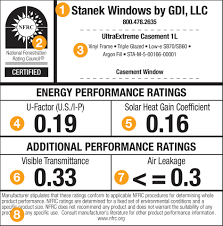High-end windows are not just about aesthetics and functionality – they can significantly impact a building’s energy efficiency and reduce energy costs. Investing in high-quality windows with excellent thermal performance can lead to long-term energy savings and contribute to a more sustainable future. In this article, we’ll discuss how high-end windows reduce energy costs through superior thermal performance and the factors to consider when choosing windows for your home or building project.
Let’s discuss how high-end windows reduce energy costs through superior thermal performance and the factors to consider when choosing windows for your home or building project
Glazing Options: Double vs. Triple Glazing
One of the main factors contributing to a window’s thermal performance is the type of glazing used. Double-glazed windows consist of two panes of glass separated by a gas-filled space, while triple-glazed windows have three panes. Triple-glazed windows provide better insulation and help minimize heat transfer, making them ideal for energy-efficient building designs.
Low-E Coatings and Gas Fills
High-end windows often feature low-emissivity (Low-E) coatings which are thin layers of metal oxide applied to the glass surface. These coatings help to reflect heat back into the building during winter and prevent excessive heat gain during summer. Gas fills such as argon or krypton are used between the glass panes to improve insulation and reduce heat transfer further.
Thermally Broken Frames
The frames of high-end windows are designed to minimize heat transfer. Thermally broken frames as found in aluminum windows incorporate a barrier between the interior and exterior parts of the frame which prevents heat from being conducted through the metal. In wood and uPVC windows, the materials themselves provide natural insulation.
Air Tightness
High-end windows are designed and manufactured with precision to ensure excellent air tightness. This reduces drafts and prevents unwanted heat loss or gain to contribute to overall energy efficiency.
Energy Ratings and Certifications
When choosing high-end windows it is important to look for products with energy performance ratings and certifications such as the Passive House standard or the National Fenestration Rating Council (NFRC) label. These ratings provide an indication of the window’s thermal performance and can help guide your decision-making process.
To sum it up :
Investing in high-end windows with superior thermal performance can significantly reduce energy costs by minimizing heat transfer, improving insulation and ensuring air tightness. When selecting windows for your home or building project, consider factors such as glazing options, Low-E coatings, gas fills, thermally broken frames and energy ratings to maximize your investment and contribute to a more sustainable and energy-efficient future.
